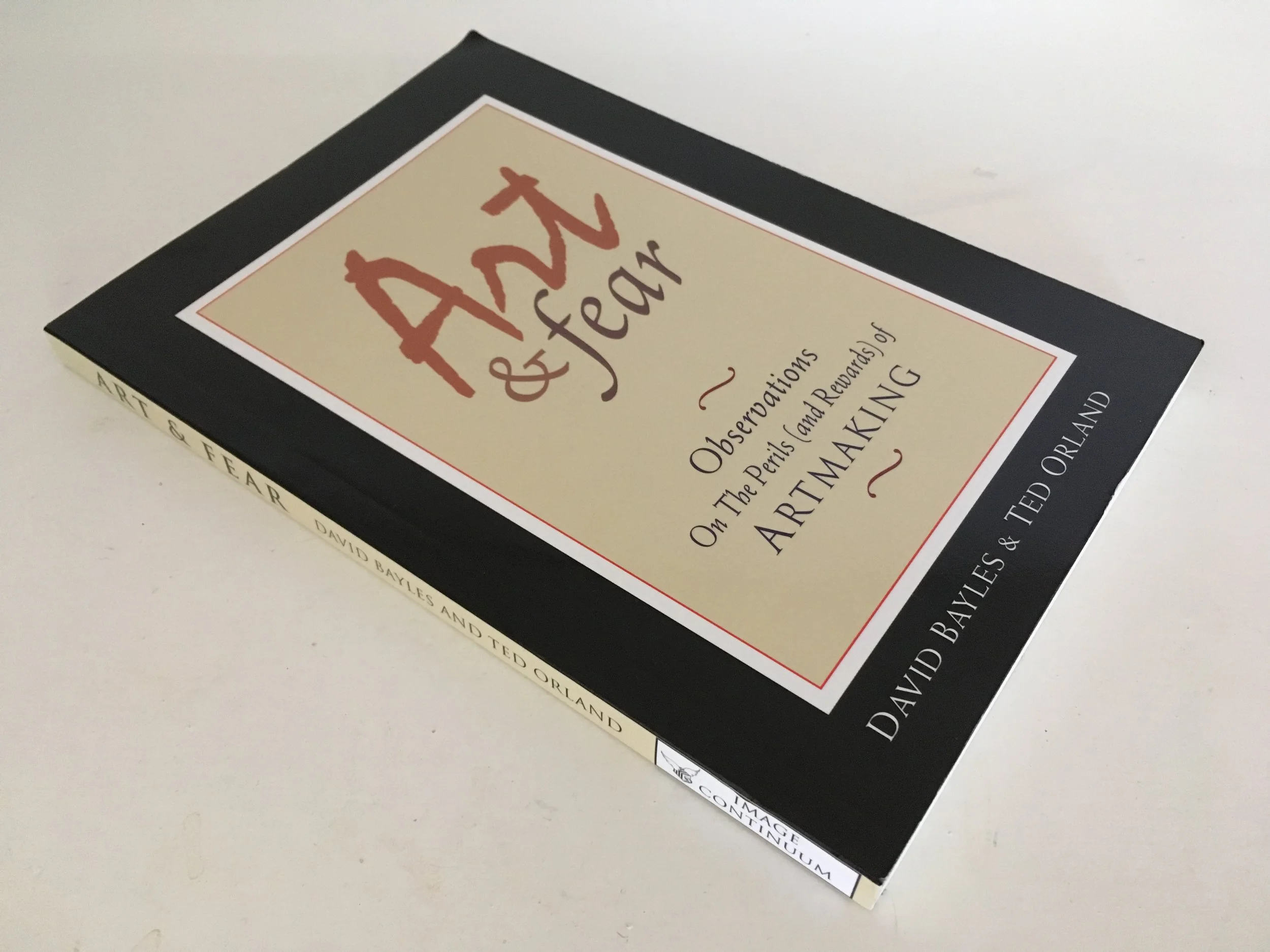In last week’s post on Acknowledging the Fear I mentioned the book Art & Fear: observations on the perils (and rewards) of artmaking. It’s such a helpful little book that I thought it deserved its own post. So here it is…
I pick up a lot of books that aim to elucidate the creative processes of artists, that give insights into how and why we create, or that claim to offer solutions to the struggles that go with creativity. So many end up being disappointing. For example, my original plan for this last months’s book recommendation in my newsletter had been The War of Art by Steven Pressfield, a book that seems to turn up a lot in blogs or podcasts and is usually well-regarded. So, I finally ordered it from Amazon and after reading it all in about half an hour (it is incredibly short) my overwhelming feeling was ‘meh’. Despite having a title which very much resonates with me at the moment – Break through the blocks and win your inner creative battles – I couldn’t find anything that useful within the book. It’s full of trite, condescending fragments of ideas, many of which seem to contradict each other (often within pages). I also don’t like the tone, which suggests that not only is being creative sometimes a struggle (which I’m sure we can all agree) it’s full-blown war. I found the language to be overly dramatic and forceful, in talking about subjects which are deeply personal and strongly felt. So, unless you really want to read a book in which the author suggests that Hitler started WWII because he found it easier than painting (!) I suggest you give it a miss. If you’d like a good book about overcoming procrastination (which the book partly focuses on) then look at The Now Habit by Neil Fiore, and if you would like to think of your creativity as something you have a duty to do (which it also believes) then check out Big Magic by Elizabeth Gilbert – both are infinitely better books.
Anyway, I digress. Luckily, in the same order I took a punt on a book that I found in the ‘other people who bought this…’ section. And I am so glad that I did. It’s another slim read, easy to read in one setting and then slowly digest and go back through. But, unlike Steven Pressfield’s book, which feels like it was someone who (possibly) hates their creative process, this book feels like it was written by people who care passionately about theirs, and about others’. Both authors are artists and teachers, and throughout the years they have gathered questions that they were curious to answer: How does art get done? Why, often does it not get done? And what is the nature of the difficulties that stop so many who start? As they state, “this book is about what it feels like to sit in your studio or classroom, at your wheel or keyboard, easel or camera, trying to do the work you need to. It is about committing your future to your own hands, placing Free Will above predestination, choice above chance. It is about finding your own work.”
This little book covers a lot of ground, it starts by looking at assumptions people have about their artmaking and at the fears that people either have all through their careers or may develop along the way. Things like uncertainty, doubts about your talents, fears about how others perceive you. These fears are the things that will slow you down, cause blocks or even lead to you giving up altogether. The authors look at different aspects of the art world, from academia to galleries, and how these affect how people feel about their work, what ‘good’ they do for artists and ways to shore yourself up against the challenges they may bring.
A strong thread throughout the book is the need for artists to find their own way, to find a way to continue to work when things get difficult. The artists that survive are the ones who have learned ‘how to not quit’. And it seems that so much of this comes down to finding your own approach, discovering how to use your own voice, find your own unique way of interacting with your materials. It means accepting that creating involves risk and uncertainty, that all you can do is to focus on the work that you need to be doing right now, work that matters to you, that contributes something to the world in your own way.
What I enjoyed about his book is the very real tone the authors have, and the fact that they acknowledge that often it isn’t helpful to know how other artists have specifically found ways to work or ways to overcome challenges, what is helpful is to know that others have struggled in the same ways we have. It is the shared journey, the understanding we have with other creative people.
Now, despite its many positive aspects I do feel the need to mention that at moments throughout the book the authors do seem to have some issues with Craft vs Art and I may not entirely agree with those positions, but, unlike other books on art-making, it’s nice to hear the authors acknowledge that not all artists are painters or sculptors, that they include potters and dancers and musicians. Overall, this book feels like a balanced approach to asking big questions and attempting to find answers. It won’t necessarily tell you how to find your way of making art, or how to ‘win your creative battles’ but it will help you feel inspired to keep going.
